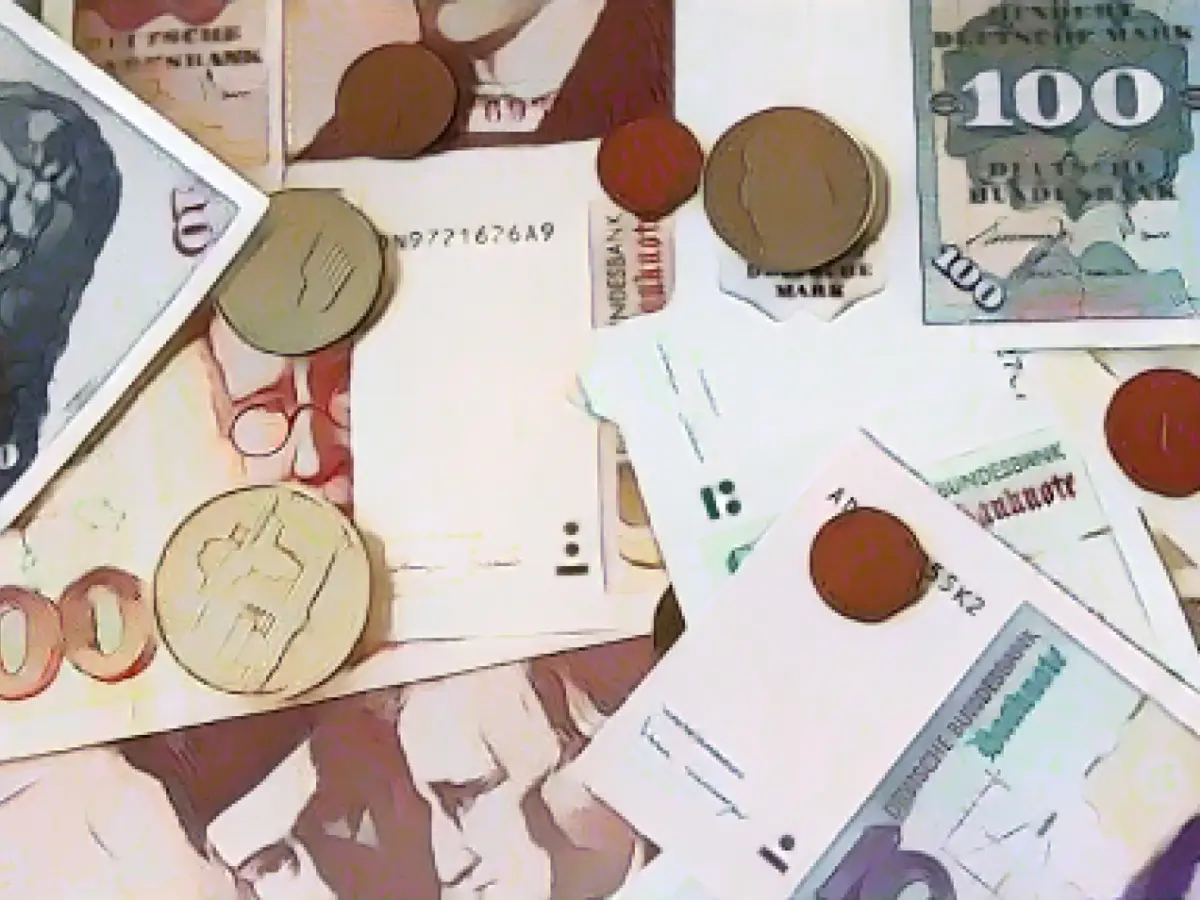Currency - A good quarter of a million Deutschmarks exchanged at the Bundesbank
Whether when clearing out or tidying up, when moving house or after the death of a relative: In Saxony-Anhalt, Deutschmarks are still turning up to be exchanged for euros at the Bundesbank. This year, 253,553.91 Deutschmarks had been brought to the branch in Magdeburg by November 30, a spokesperson explained. People took 129,640.06 euros with them after a total of 771 exchanges. On average, this amounted to 328.86 D-Mark per exchange. Compared to the previous year, the amount per exchange was lower: in 2022, people still brought 411.65 Deutschmarks to exchange.
21 years after the introduction of euro notes and coins
According to the German Bundesbank, 21 years after the introduction of euro notes and coins, there is still a large amount of deutschmarks outstanding, around 12.24 billion euros at the end of November this year. However, this is not even five percent of the amount in circulation at the time of the D-Mark. It is not possible to say how many D-Mark bills and coins are still in circulation in Saxony-Anhalt.
East-West differences
It is obvious that there is a clear difference to the western federal states. The D-Mark was only introduced on the territory of the former GDR with economic and monetary union on July 1, 1990.
As a result, significantly more money is exchanged in the Bundesbank branches in Lower Saxony to this day, as the new statistics show. While 3 exchange transactions per business day were counted in the Magdeburg branch, there were 15 in Hanover from January to November, 8 in Oldenburg and 5 in Göttingen. The average sums were also significantly higher in Lower Saxony than in Saxony-Anhalt.
More exchange transactions again
According to the Bundesbank, the number of Deutschmark exchanges had fallen sharply during the coronavirus period. Now the figures have increased again, similar to the previous year. In 2022, there had been 725 exchange transactions at the Magdeburg branch; this year, there had already been 771 by the end of November. The Bundesbank believes this is due to the absence of pandemic-related restrictions at the cash registers. In general, the exchange business is likely to continue for the foreseeable future, it said.
Large finds during clear-outs
The reasons for finding leftover Deutschmarks remain diverse: spring cleaning, sorting out old clothes, visitors from abroad with leftover Deutschmarks are just some of them. Larger amounts are often due to clearing out and tidying up in connection with moving house or after the death of relatives.
The Bundesbank is still obliged to exchange the remainders, for an unlimited period of time and in unlimited amounts. No fees are charged.
German Bundesbank for the exchange of DM into Euro
Read also:
- A clan member is punished here
- Traffic lawyer warns: Don't talk to the police!
- Will he be convicted as Jutta's murderer after 37 years?
- He also wanted to kill his cousin
- Despite being 21 years since the introduction of the euro, substantial amounts of Deutschmarks are still exchanged in Bundesbank branches in regions like Saxony-Anhalt and Lower Saxony.
- In Magdeburg, a Bundesbank branch in Saxony-Anhalt, a significant number of Deutschmarks were exchanged throughout the year, totaling 253,553.91 Deutschmarks by November 30.
- Contrasting with Saxony-Anhalt, Bundesbank branches in Lower Saxony, such as Hanover, Oldenburg, and Göttingen, have reported higher quantities and values of Deutschmarks exchanged, reflecting East-West differences.
- The Bundesbank branch in Lower Saxony's Hanover reported a substantial 15 exchange transactions daily from January to November, with an average sum significantly higher than Saxony-Anhalt.
- After a brief decline during the COVID-19 pandemic, the number of Deutschmark exchanges has since increased in 2023, reaching 771 exchanges by the turn of the year at the Magdeburg branch in Saxony-Anhalt.
Source: www.stern.de








